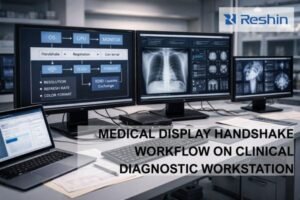Drowning in diagnostic monitor choices and terrified of making the wrong call? Pick incorrectly, and you could face misdiagnoses, crippling budget overruns, or inefficient teams. The stakes are high for patient care and your department’s resources. This guide cuts through the complexity, revealing exactly how versatile 2MP monitors can be your cost-effective solution for precise, reliable imaging without compromise.
2MP diagnostic monitors are highly suitable for general radiology tasks such as viewing chest X-rays, bone scans, and certain CT or MRI slice reviews. Departments including general internal medicine, physical examination centers, emergency rooms, and outpatient clinics often find them to be a cost-effective and reliable choice for these applications.
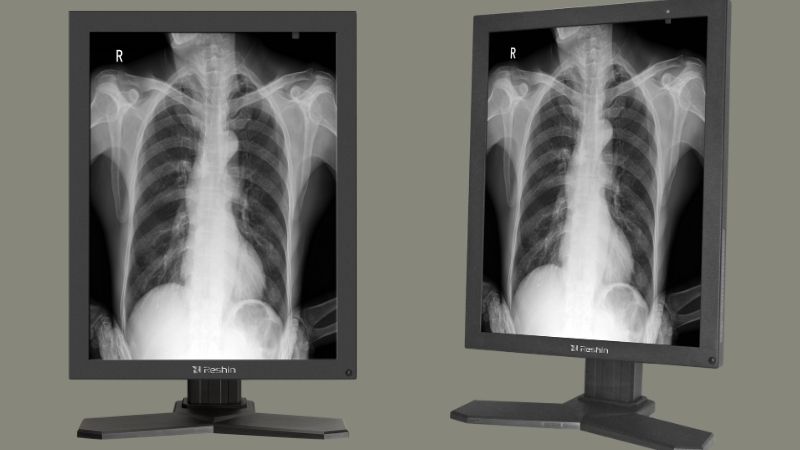
I’m Martin, President of Reshin. We specialize in manufacturing medical monitors. We often guide hospitals through this very decision, helping them select the right display for the right job.
Let’s delve deeper into how these versatile 2MP displays, like our Reshin MD22CA or MD26GA models, fit effectively into the diverse landscape of modern healthcare diagnostics, ensuring both quality and value.
Which Hospital Departments Commonly Use 2MP Diagnostic Monitors?
Uncertain if 2MP monitors align with your department’s specific diagnostic needs? Choosing incorrectly means either overspending on features you don’t use or risking essential diagnostic clarity.
General radiology, emergency rooms, outpatient clinics, physical examination centers, and internal medicine wards frequently utilize 2MP monitors for primary reviews of certain image types or for secondary review purposes, effectively balancing cost and essential image quality.
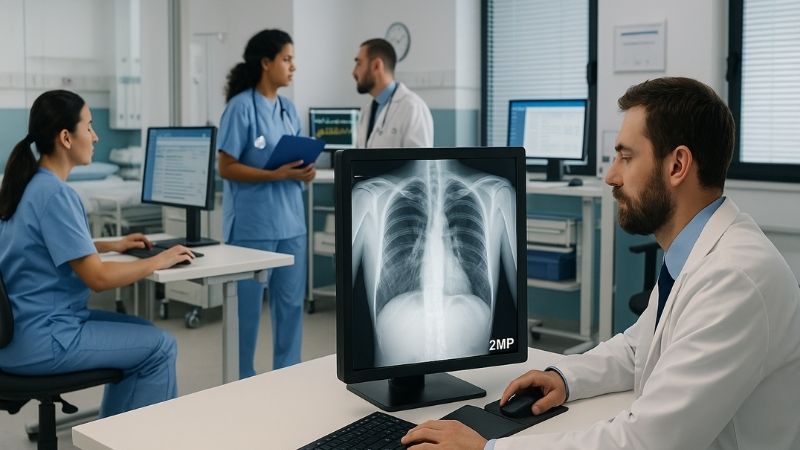
In many hospital procurement cases I’ve handled, I’ve found that the highest resolution isn’t always necessary. As I often tell clients, departments like physical examination centers or general internal medicine units prioritize clear, reliable images1 and smooth operational performance over chasing the highest pixel count. For them, Reshin’s 2MP diagnostic monitors2, such as the MD22CA (2MP Diagnostic Monitor) or the MD26GA (2MP Diagnostic Monitor), offer just the right balance—they are stable, deliver consistently clear images, and are cost-effective3. These monitors are workhorses in environments where routine X-rays are common. For instance, an ER physician needs to quickly assess a trauma X-ray, or an internist reviews a follow-up chest X-ray on the ward. In these scenarios, the detailed nuance required for mammography isn’t the primary concern; rather, it’s about dependable clarity for common pathologies. Our 2MP displays provide exactly that, ensuring these departments can function efficiently without unnecessary expenditure.
Common Departmental Uses for 2MP Monitors:
| Department | Typical Use Cases for 2MP Monitors (e.g., Reshin MD22CA, MD26GA) |
|---|---|
| General Radiology | Routine chest X-rays, skeletal X-rays, abdominal X-rays |
| Emergency Rooms (ER) | Rapid assessment of trauma X-rays, preliminary reads |
| Outpatient Clinics | Reviewing referred images, basic diagnostics for common conditions |
| Physical Examination Centers | Screening chest X-rays as part of routine health checks |
| Internal Medicine Wards | Follow-up image reviews, bedside consultations using PACS viewers |
| Orthopedics | Review of bone X-rays for fractures and joint assessments |
What Types of Medical Images Can 2MP Monitors Handle Effectively?
Worried that a 2MP monitor won’t clearly display the specific medical images your team relies on? This understandable concern could lead to misinterpretation or diagnostic errors if the wrong display is chosen.
2MP monitors, like our Reshin MD26GA, excel with many static, lower-to-mid matrix images such as chest X-rays, most skeletal radiographs, and general CT/MRI series reviews. They are generally less ideal for primary diagnosis of high-detail mammography or complex angiography.
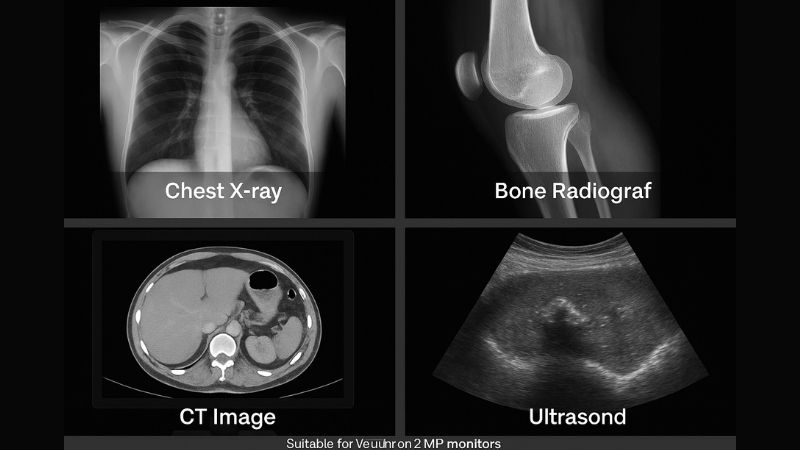
We often say, “Higher resolution isn’t always better—it needs to be used appropriately.” This is my second core insight. A 2MP display4, for example, is perfectly adequate and often ideal for viewing standard posterior-anterior (PA) and lateral chest X-rays, where the typical image matrix size fits well within its capabilities. Similarly, most skeletal X-rays, whether for diagnosing a fracture in an extremity or assessing arthritis, are clearly rendered on a 2MP screen. Even for reviewing series of CT or MRI scans for general anatomical overview or follow-up, a 2MP monitor can be quite effective, provided the radiologist isn’t hunting for extremely fine details that would necessitate a 3MP or 5MP display. However, it’s crucial to understand its limitations. For primary diagnostic interpretation of mammograms, where microcalcifications are critical, a 2MP monitor would struggle; that’s where our 5MP models5 like the MD50C or MD52G are essential. Understanding this required image fidelity6 is the very first thing I consider when advising clients on their monitor configurations.
Image Type Suitability for 2MP Monitors:
| Image Type | Suitability for 2MP Monitor | Rationale |
|---|---|---|
| Chest X-rays (CR/DR) | Excellent | Standard image matrix is well within 2MP resolution. |
| Skeletal Radiography | Excellent | Clear visualization of bone structures, fractures, and joints. |
| Abdominal X-rays | Good | Sufficient for identifying common issues like obstructions or free air. |
| General CT/MRI Slices | Good (for review) | Suitable for overview, follow-up, or non-complex primary reads. |
| Ultrasound (Static) | Good (for review) | Can display static ultrasound images adequately for general review. |
| Mammography | Not Recommended (Primary) | Requires higher resolution (5MP+) for microcalcification detection. |
| Complex Angiography | Not Recommended (Primary) | Fine vessel detail benefits from higher resolution displays. |
Why Do Many Hospitals Still Choose 2MP Instead of Higher Resolutions?
Is higher resolution always the undisputed champion in medical imaging? Over-specifying monitors across all departments can unnecessarily inflate capital expenditure without adding tangible diagnostic value for many common tasks.
Hospitals continue to choose 2MP monitors due to their significant cost-effectiveness, proven suitability for prevalent imaging modalities like X-rays, lower IT infrastructure demands, and established reliability for numerous review tasks, especially when budget is a key determining factor.
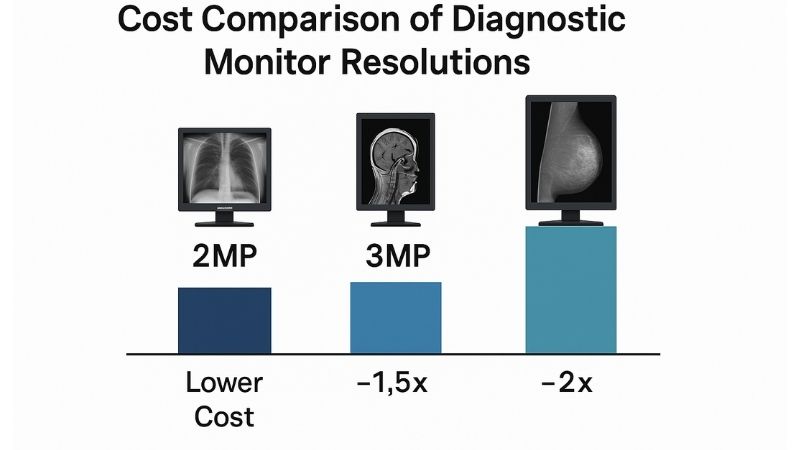
The decision often comes down to a pragmatic balance of needs and resources. For many institutions, particularly those with tight budgets or requiring large fleets of displays for general review purposes, 2MP monitors7 like our Reshin MD22CA offer an unbeatable combination of performance and value. My fourth insight underscores this: "For images like chest X-rays, post-op reviews, or bone scans—often viewed dozens of times daily—a 2MP display is both efficient and accurate." These images form a substantial portion of daily workload in many hospitals. Equipping every workstation with a 3MP or 5MP monitor for these tasks would be an inefficient use of funds. Furthermore, higher resolution displays typically demand more powerful graphics cards and can strain network bandwidth when images are retrieved from PACS8. 2MP monitors7 are less demanding on the IT infrastructure, simplifying deployment and maintenance. Many of our clients deploy Reshin 2MP models strategically in initial consultation rooms, for technologist QC stations, or in secondary review areas, improving overall workflow efficiency without compromising the necessary image quality for those specific tasks.
What Advantages Do Reshin’s 2MP Monitors Offer Compared to Other Brands?
Do you think all 2MP diagnostic monitors are fundamentally the same? Choosing based on price tag alone can mean missing out on crucial features that ensure diagnostic confidence, user comfort, and long-term reliability.
Reshin’s 2MP monitors, such as the MD22CA and MD26GA, provide stable, DICOM-calibrated brightness, integrated ambient light sensors, anti-fatigue backlight algorithms, and robust build quality, delivering superior long-term value and enhanced diagnostic reliability.
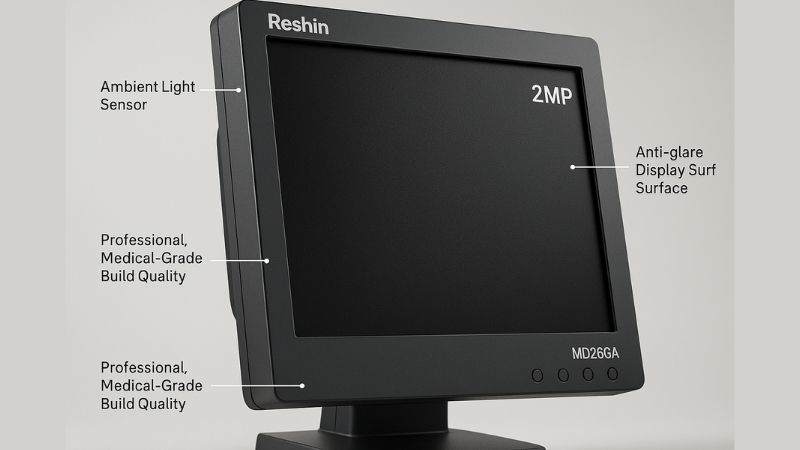
Many people mistakenly believe a medical monitor is just a standard industrial screen with DICOM support added on—but there’s so much more to it, especially when it comes to ensuring diagnostic accuracy and physician well-being. This is my third key insight. At Reshin, even our 2MP diagnostic monitors, like the MD22CA and MD26GA, are packed with technology designed for the clinical environment. We include features like ambient light sensors9 that automatically adjust display brightness to optimal levels for the reading room environment. Our uniform brightness correction ensures consistency across the entire screen, critical for not missing subtle details at the periphery. We also incorporate anti-fatigue backlight algorithms10, which help reduce flicker and modulate brightness in a way that minimizes eye strain for doctors who may be reading images for hours. Users often tell us, “It’s bright but never harsh,” and that’s feedback we’re particularly proud of. This commitment to quality is backed by what I mentioned in my fifth insight: our responsive support11. Many clients, even those in regions like Latin America, have switched from other international brands to Reshin because of our fast customization capabilities and reliable remote calibration support, all stemming from over a decade of deep R&D by our 200+ member professional team.
Reshin 2MP Monitor Advantages (e.g., MD22CA, MD26GA):
| Reshin Feature | Benefit to User |
|---|---|
| Factory DICOM Part 14 Calibration | Ensures accurate and consistent grayscale reproduction from day one. |
| Ambient Light Sensor | Optimizes brightness for room conditions, reduces eye strain. |
| Uniform Brightness Correction | Provides consistent luminosity across the entire screen surface. |
| Anti-Fatigue Backlight Algorithms | Reduces flicker and modulates brightness to minimize eye strain during long use. |
| Stable Brightness & Long Lifespan | Reliable performance over years of use due to quality components. |
| Robust Build Quality | Designed to withstand the demands of a busy clinical environment. |
| Responsive Support & Customization | Fast service and ability to tailor solutions, as praised by global clients. |
How Do 2MP Monitors Complement Higher-End Models in Radiology Workflows?
Struggling to optimize your hospital’s monitor fleet and budget effectively? A haphazard mix-and-match approach can be confusing and impact overall departmental efficiency if not planned strategically.
2MP monitors serve as cost-effective solutions for preliminary image reviews, patient follow-ups, and non-critical image viewing in various clinical settings. This strategically frees up higher-resolution displays (e.g., Reshin 5MP MD50C or 12MP MD120C) for demanding primary diagnostic tasks like mammography or intricate CT/MR studies.
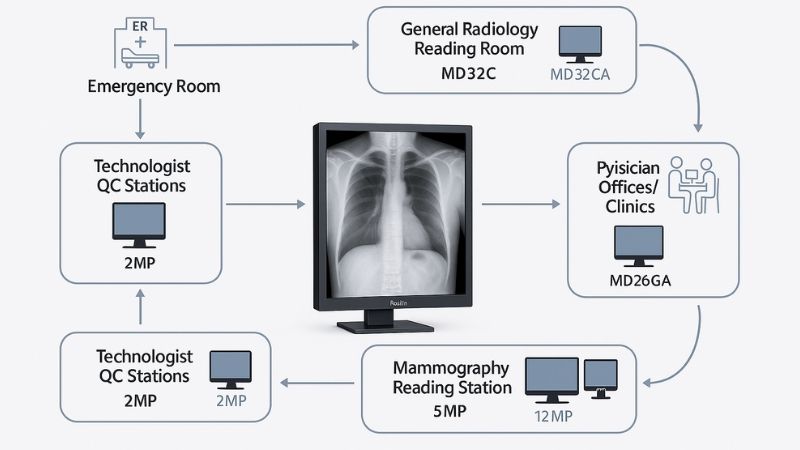
A well-structured radiology department often employs a tiered approach to its display technology, and 2MP monitors play a vital role in this ecosystem. My fourth insight touches upon this: "Many of our clients deploy 2MP models in initial consultation rooms or secondary review areas, improving workflow without compromising image quality." For instance, the main radiology reading room might be equipped with Reshin’s higher-resolution displays12 – perhaps our 3MP MD32C or MD33G for general CT/MRI, or the 5MP MD50C (Color Mammography Monitor) / MD52G (Grayscale Mammography Monitor) for breast imaging, or even our 8MP or 12MP MD120C for multi-modality fusion. Simultaneously, Reshin 2MP monitors like the MD22CA or MD26GA can be deployed effectively in referring physicians’ offices, on clinical wards for bedside reviews via PACS, at technologist QC stations, or in teaching settings where general case demonstration is sufficient. This strategy optimizes budget allocation by ensuring that the most expensive, highest-specification monitors are reserved for the tasks that absolutely demand them, while still providing DICOM-compliant13, clinically adequate displays for a multitude of other essential tasks. It creates an efficient, cost-effective, and clinically sound imaging environment.
Conclusion
2MP diagnostic monitors are ideal for general radiology exams and review tasks in diverse departments, offering a smart, cost-effective balance of essential clarity and reliable performance, further enhanced by Reshin’s quality features.
-
Understanding the significance of clear images can improve patient care and operational efficiency in healthcare settings. ↩
-
Explore how 2MP diagnostic monitors can enhance hospital efficiency and image clarity without overspending. ↩
-
Learn about cost-effective solutions in medical imaging that balance quality and budget, crucial for healthcare facilities. ↩
-
Explore the benefits of 2MP displays in medical imaging to understand their effectiveness and limitations better. ↩
-
Learn why 5MP models are crucial for accurate mammogram interpretation, especially for detecting microcalcifications. ↩
-
Discover how image fidelity affects the quality of medical imaging and why it’s vital for accurate diagnoses. ↩
-
Explore how 2MP monitors can enhance efficiency and accuracy in medical imaging, making them a smart choice for healthcare facilities. ↩ ↩
-
Learn about PACS systems and their role in medical imaging, crucial for understanding how images are managed and accessed in healthcare. ↩
-
Explore how ambient light sensors enhance diagnostic accuracy and physician comfort in clinical settings. ↩
-
Learn about the technology behind anti-fatigue backlight algorithms and their role in reducing eye strain for healthcare professionals. ↩
-
Discover why responsive support is crucial for medical equipment users and how it impacts their experience and satisfaction. ↩
-
Discover the advanced features of Reshin’s displays that improve diagnostic accuracy and workflow in radiology departments. ↩
-
Understanding DICOM compliance is crucial for ensuring high-quality medical imaging standards and interoperability in healthcare. ↩

